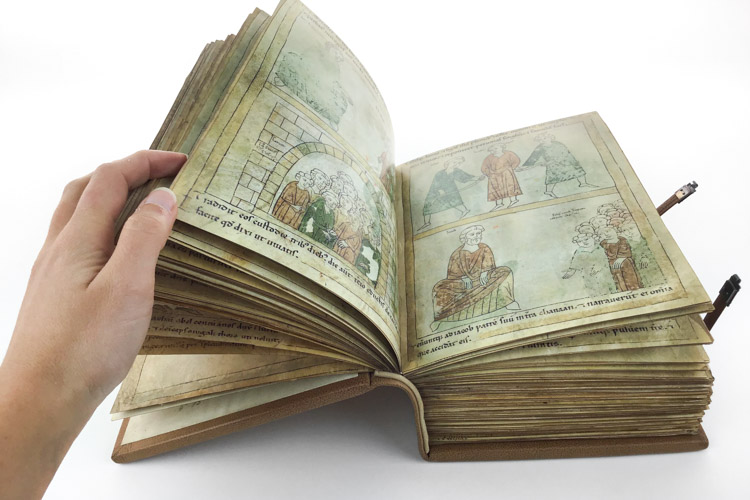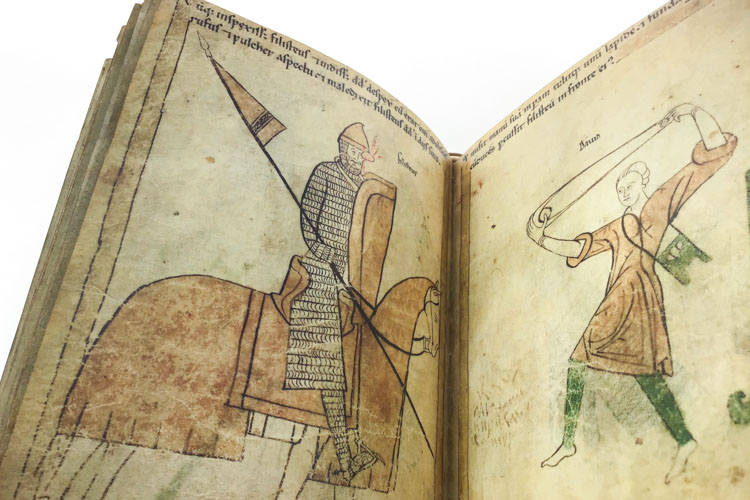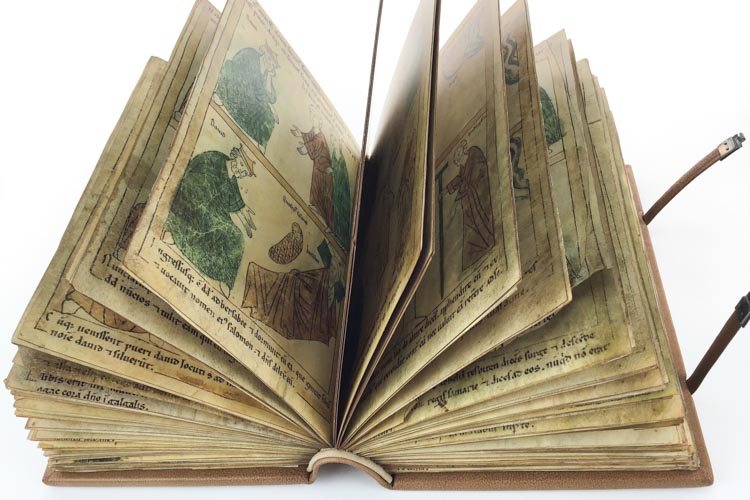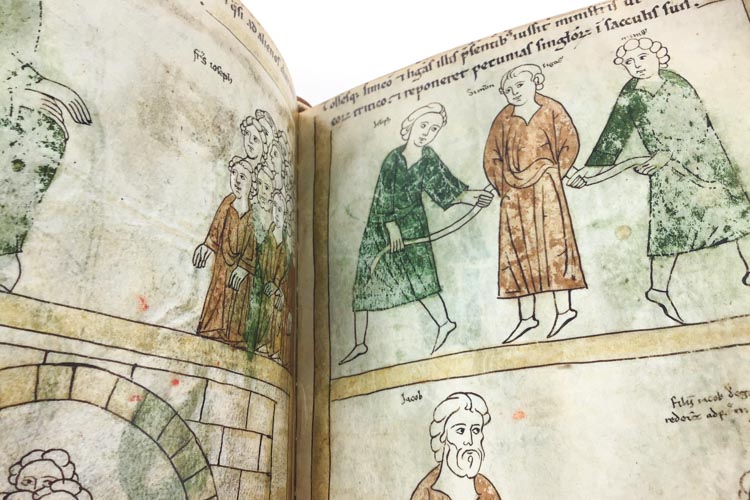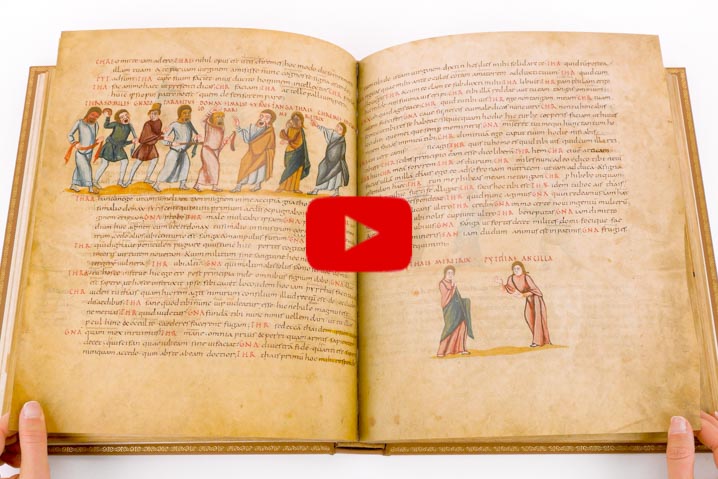The Pamplona Bible is an extraordinary example of the evolving characteristics of the Christian Bible. Completed around 1200, the Bible comprises three volumes with a large number of colored drawings in the Romanesque style.

This picture Bible was produced in the royal chancery at Pamplona under the direction of the chancellor Petrus Ferrandus, around the year 1200. It is now preserved in the Prince Öttingen-Wallenstein collection, in the library of the University of Augsburg.
The manuscript contains the Old and New Testaments as well as representations of saints, and additional apocryphal texts.
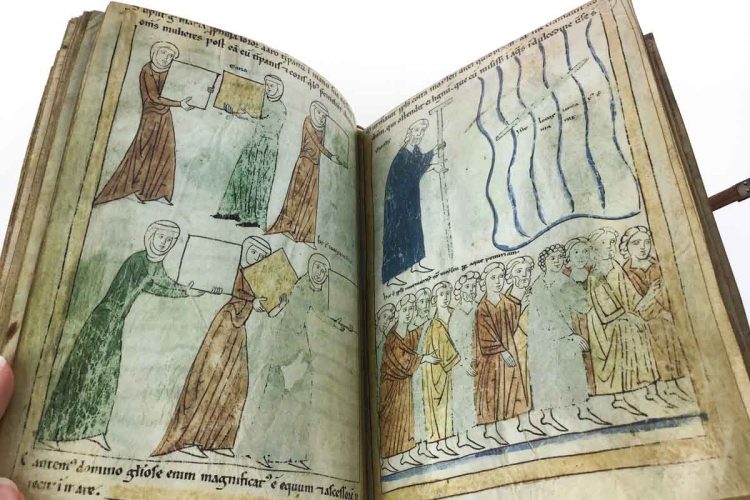
The book is extremely rare in its format: a large picture Bible without any texts other than condensed two-or-three line explanations for each picture.
This kind of extensively illustrated Bible exists in only three manuscripts in the world: this one in the collection of Prince Öttingen-Wallenstein, a second book in the Municipal Library of Amiens (Ms lat. 108), and a third, later manuscript, today housed in the New York Public Library, Spencer Collection MS 22, which was made around 1320 in France.
The picture Bible in Augsburg presents illuminations closely comparable to the exemplar in Amiens. The resemblance is so strong that scholars believe that the same illuminators must have painted both manuscripts.
A colophon in the Amiens Bible writes that Petrus Ferrandus made the manuscript in 1197 for the personal use of the King of Navarre, Sancho el Fuerte (1153-1234). The similarity of the Amiens and Augsburg Bibles strongly suggests that both picture Bibles were produced in Pamplona for the use of King Sancho.
The Pamplona Bible: A Picture Bible in Watercolors
The manuscript is exceptional because, like the Amiens Bible, it contains the largest extant biblical picture cycle before 1200. More than 900 illuminations cover half or full pages of the entire volume depicting the biblical text from the creation to the end of the world.
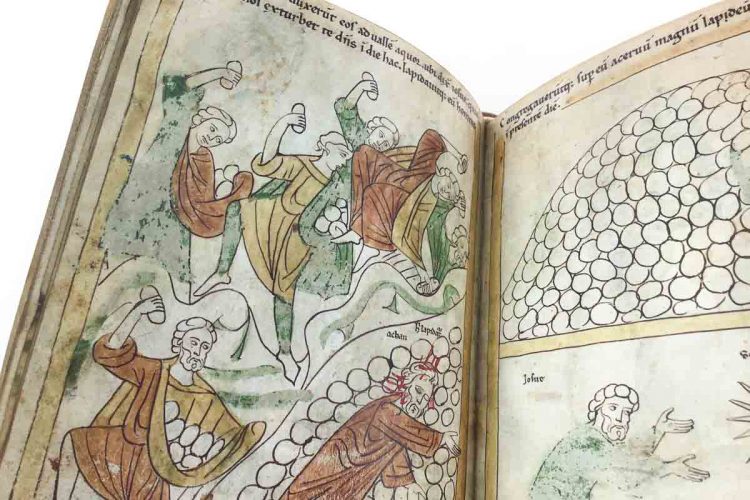
The miniatures are realized in black ink made with fine brush strokes and colored with watercolor techniques. The scenes are essential, displaying a limited number of figures. The linear style of the illuminations along with the dramatic poses of the biblical characters create a sense of movement throughout the pages.
The drawings in the Romanesque style use simple and confident outlines and are both bold and evocative. Colors employed include yellow, brown, green, blue, red (for fire, and blood), silver, and gold (for divine attributes.)
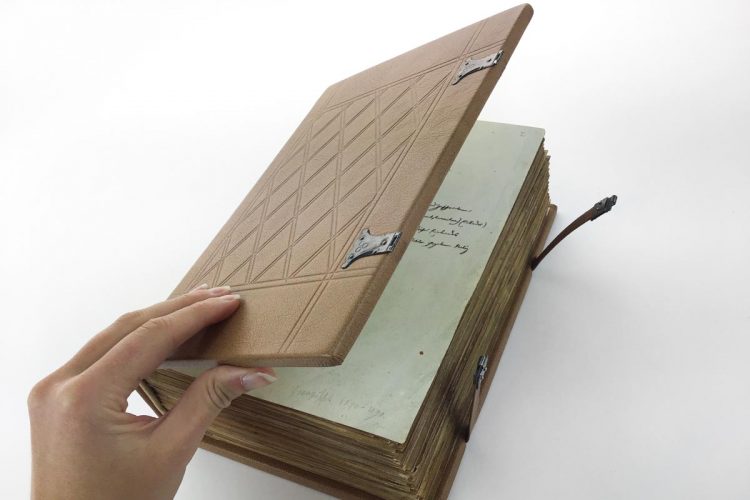
Biblical Illustrations to Instruct Sancho el Fuerte
Following the evidence contained in the Amiens colophon, we know that the royal chancellor of Sancho el Fuerte, the cleric Petrus Ferrandus, directed the production of the Pamplona Bibles.
Petrus Ferrandus would have intended the picture Bible as a moral handbook for the king, whose relationship to the Church was troubled because of his policy of reunion with the Almohad ruler Yacub ben Yussuf. The tense relationship with the Church ended with the excommunication of Sancho el Fuerte by Pope Celestine III.
Considering the historical context, the Pamplona Bible could present in pictures the biblical precedents for the kind of conduct that the cathedral chapter of Pamplona might have wished Sancho to observe. The educational function of the book is in line with the literary genre of religious and moral instruction of rulers by churchmen, for which there is ample documentation since Early Christian times.
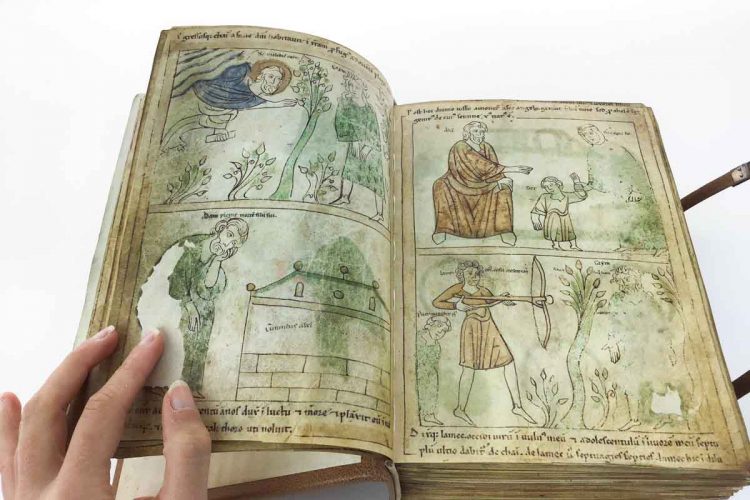
From Pamplona to Augsburg
Notes on the Bible (fol. 12r) indicate that it was used in 1556 by the Spaniard Duarte Naberade. Between 1736 and 1819 it was in the possession of Charles Philippe Campion de Tersan. Another note indicates it was in Valladolid in northern Spain in 1809 (fol. 1r).
In 1814, a Parisian art collector, Abbé Charles, negotiated the sale of the manuscript to Ludwig Fürst von Oettingen-Wallerstein. It subsequently became the property of the Fürstlich Oettingen-Wallersteinsche Bibliothek.
NEW WEEKLY VIDEO
Find our more about the Gospel Harmony of Eusebius (Brescia, Biblioteca Queriniana, Codex F. II. 1) on our website!


